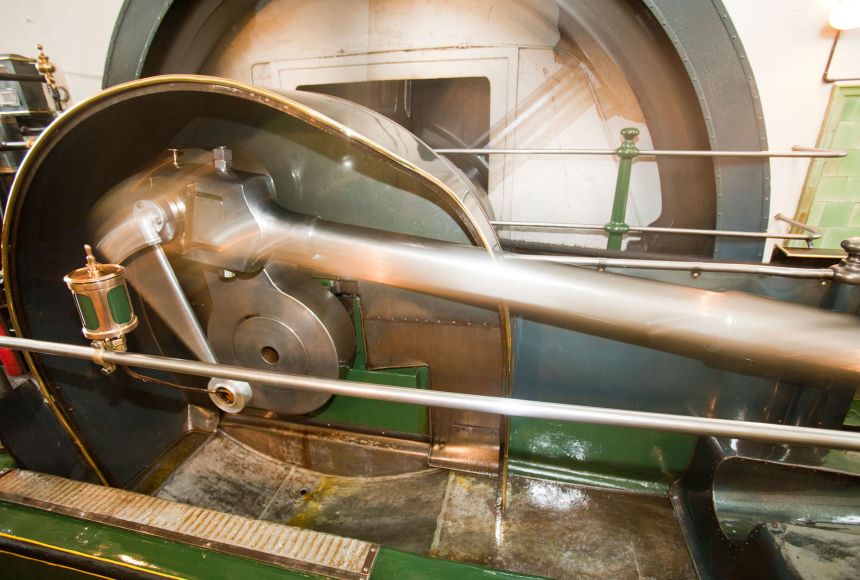It has been said that the Industrial Revolution was the most profound revolution in human history, because of its sweeping impact on people’s daily lives. The term “industrial revolution” is a succinct catchphrase to describe a historical period, starting in 18th-century Great Britain, where the pace of change appeared to speed up. This acceleration in the processes of technical innovation brought about an array of new tools and machines. It also involved more subtle practical improvements in various fields affecting labor, production, and resource use. The word “technology” (which derives from the Greek word techne, meaning art or craft) encompasses both of these dimensions of innovation.
The technological revolution, and that sense of ever-quickening change, began much earlier than the 18th century and has continued all the way to the present day. Perhaps what was most unique about the Industrial Revolution was its merger of technology with industry. Key inventions and innovations served to shape virtually every existing sector of human activity along industrial lines, while also creating many new industries. The following are some key examples of the forces driving change.
Agriculture
Western European farming methods had been improving gradually over the centuries. Several factors came together in 18th-century Britain to bring about a substantial increase in agricultural productivity. These included new types of equipment, such as the seed drill developed by Jethro Tull around 1701. Progress was also made in crop rotation and land use, soil health, development of new crop varieties, and animal husbandry. The result was a sustained increase in yields, capable of feeding a rapidly growing population with improved nutrition. The combination of factors also brought about a shift toward large-scale commercial farming, a trend that continued into the 19th century and later. Poorer peasants had a harder time making ends meet through traditional subsistence farming. The enclosure movement, which converted common-use pasture land into private property, contributed to this trend toward market-oriented agriculture. A great many rural workers and families were forced by circumstance to migrate to the cities to become industrial laborers.
Energy
Deforestation in England had led to a shortage of wood for lumber and fuel starting in the 16th century. The country’s transition to coal as a principal energy source was more or less complete by the end of the 17th century. The mining and distribution of coal set in motion some of the dynamics that led to Britain’s industrialization. The coal-fired steam engine was in many respects the decisive technology of the Industrial Revolution.
Steam power was first applied to pump water out of coal mines. For centuries, windmills had been employed in the Netherlands for the roughly similar operation of draining low-lying flood plains. Wind was, and is, a readily available and renewable energy source, but its irregularity was considered a drawback. Water power was a more popular energy source for grinding grain and other types of mill work in most of preindustrial Europe. By the last quarter of the 18th century, however, thanks to the work of the Scottish engineer James Watt and his business partner Matthew Boulton, steam engines achieved a high level of efficiency and versatility in their design. They swiftly became the standard power supply for British, and, later, European industry. The steam engine turned the wheels of mechanized factory production. Its emergence freed manufacturers from the need to locate their factories on or near sources of water power. Large enterprises began to concentrate in rapidly growing industrial cities.
Metallurgy
In this time-honored craft, Britain’s wood shortage necessitated a switch from wood charcoal to coke, a coal product, in the smelting process. The substitute fuel eventually proved highly beneficial for iron production. Experimentation led to some other advances in metallurgical methods during the 18th century. For example, a certain type of furnace that separated the coal and kept it from contaminating the metal, and a process of “puddling” or stirring the molten iron, both made it possible to produce larger amounts of wrought iron. Wrought iron is more malleable than cast iron and therefore more suitable for fabricating machinery and other heavy industrial applications.
Textiles
The production of fabrics, especially cotton, was fundamental to Britain’s economic development between 1750 and 1850. Those are the years historians commonly use to bracket the Industrial Revolution. In this period, the organization of cotton production shifted from a small-scale cottage industry, in which rural families performed spinning and weaving tasks in their homes, to a large, mechanized, factory-based industry. The boom in productivity began with a few technical devices, including the spinning jenny, spinning mule, and power loom. First human, then water, and finally steam power were applied to operate power looms, carding machines, and other specialized equipment. Another well-known innovation was the cotton gin, invented in the United States in 1793. This device spurred an increase in cotton cultivation and export from U.S. slave states, a key British supplier.
Chemicals
This industry arose partly in response to the demand for improved bleaching solutions for cotton and other manufactured textiles. Other chemical research was motivated by the quest for artificial dyes, explosives, solvents, fertilizers, and medicines, including pharmaceuticals. In the second half of the 19th century, Germany became the world’s leader in industrial chemistry.
Transportation
Concurrent with the increased output of agricultural produce and manufactured goods arose the need for more efficient means of delivering these products to market. The first efforts toward this end in Europe involved constructing improved overland roads. Canals were dug in both Europe and North America to create maritime corridors between existing waterways. Steam engines were recognized as useful in locomotion, resulting in the emergence of the steamboat in the early 19th century. High-pressure steam engines also powered railroad locomotives, which operated in Britain after 1825. Railways spread rapidly across Europe and North America, extending to Asia in the latter half of the 19th century. Railroads became one of the world’s leading industries as they expanded the frontiers of industrial society.

